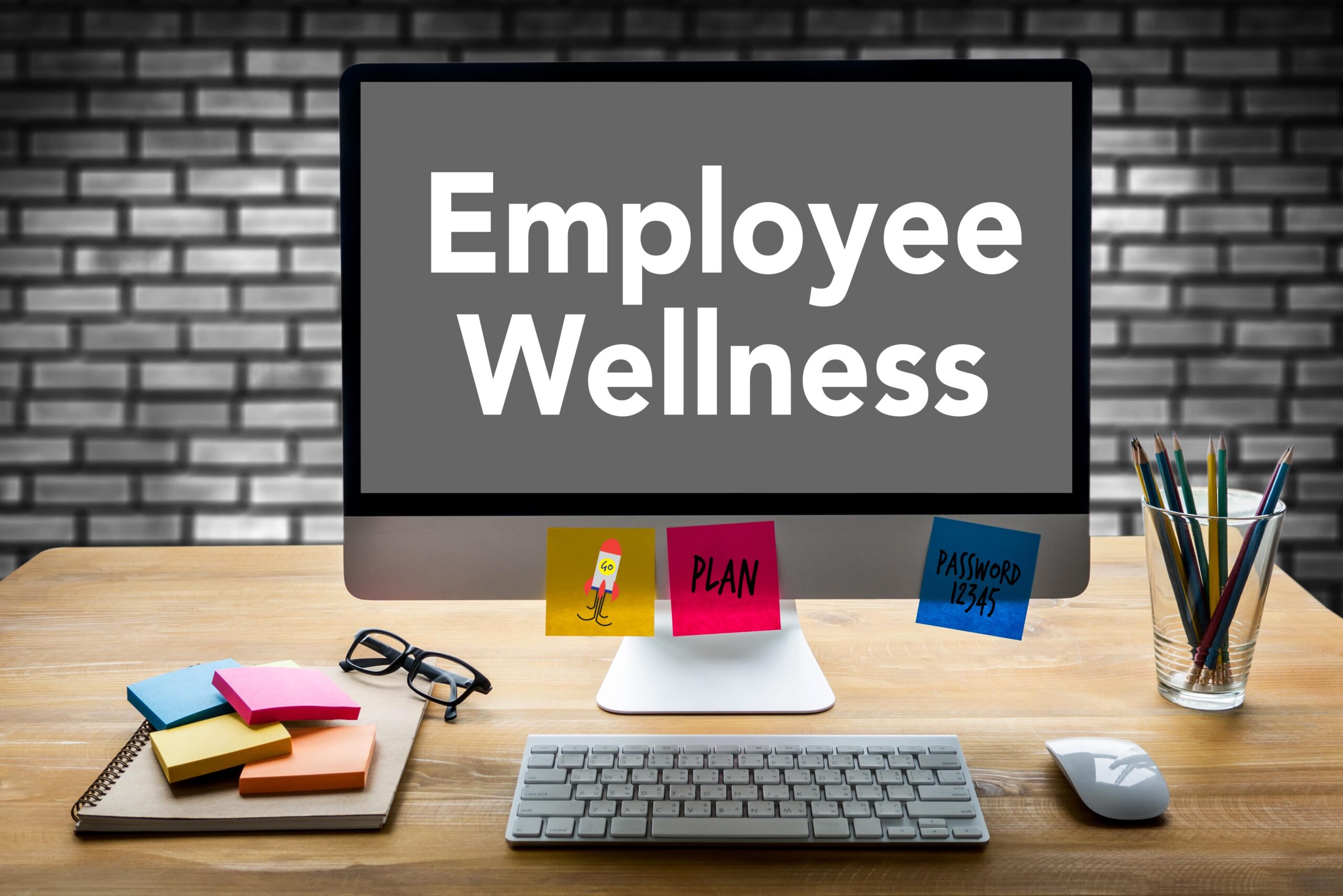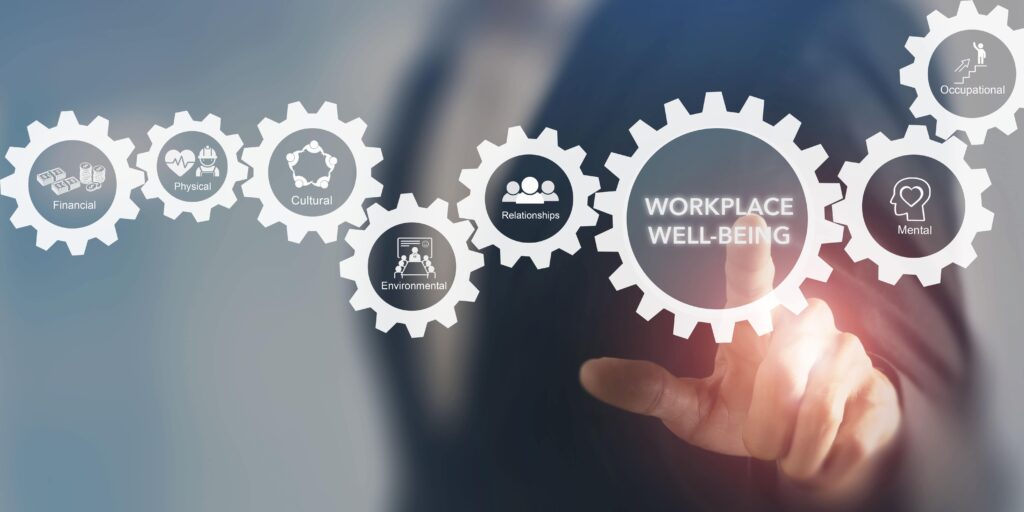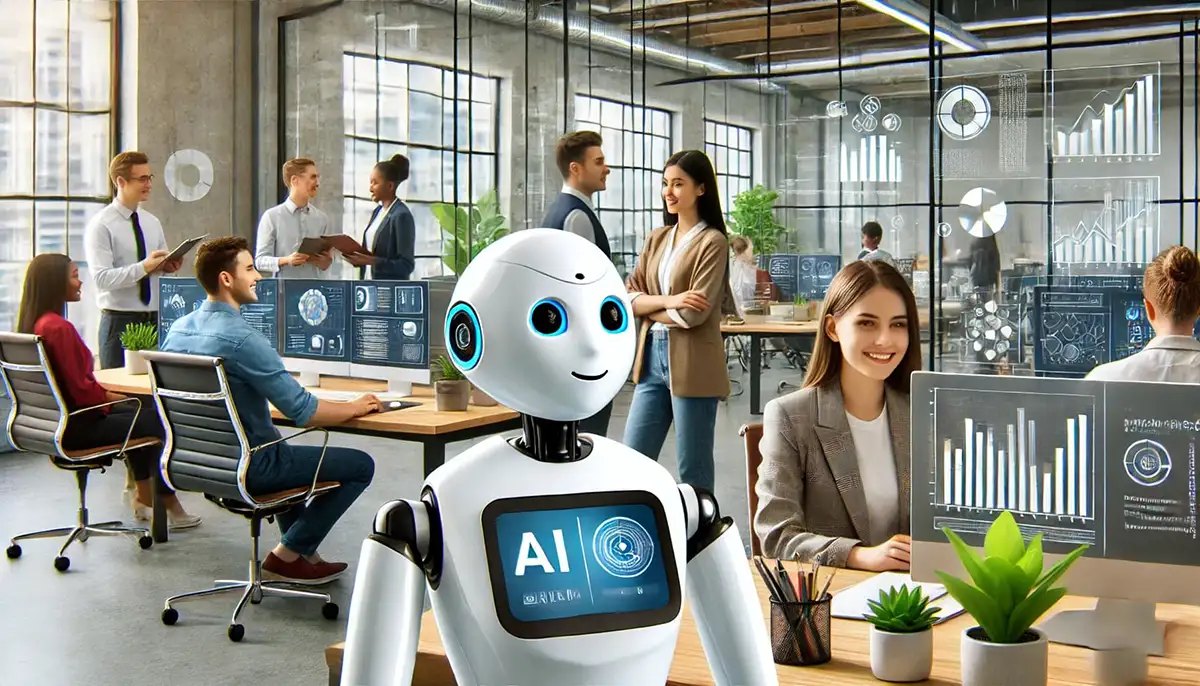The use of AI in recruitment can help automate the process of hiring, improve the experience of candidates, and even decrease the time required to fill a position. LinkedIn research reveals that 67% of hiring managers and recruiters who participated in a survey believe that AI is helping them save time. In the case of AI, it is possible to use big data to find the best candidates quickly and also free up time for more administrative work and better decisions.
However, while the strategic and operational advantages of AI in recruitment are well-established, the effects of this technology on employee well-being is another equally important but less discussed area. Recruiting in a way that is compatible with the health of the employees is not only a moral issue but a business imperative. According to the findings of the Harvard Business Review, the companies, where the employees are happier and healthier, are 20% more productive and 21% more profitable.
This article will further discuss the use of AI in recruitment, it will also discuss how AI can select candidates who are a good fit for the company’s culture and work-life balance, and other factors that can enhance employee well-being. Based on the literature review and case analysis, our goal is to present a clear picture of the connection between the use of AI for recruitment and positive employee outcomes to help organizations improve not only the recruitment process but also the workplace experience for their employees.
How AI Can Identify Candidates Who Align with Company Culture
Understanding Company Culture
Organizational culture refers to the set of norms, beliefs, attitudes, and behaviors that define an organization. It even affects how employees communicate, solve problems, and perceive their positions within the organization. An effective corporate culture can enhance employee morale, productivity, and staff turnover rates.
Various types of organizational cultures are developed depending on the strategic direction and the requirements of the organization.
- Innovative Culture. Google and Tesla, for instance, promote creativity and encourage employees to take risks by embracing innovation.
- Collaborative Culture. Zappos and Atlassian have adopted teamwork and open communication where employees are encouraged to collaborate in order to achieve the company’s objectives.
- Customer-Focused Culture. Companies like Amazon and Ritz-Carlton always aim to provide the best customer service and make sure that the clients are always happy and satisfied with the services they receive.
AI Tools for Cultural Fit
AI tools are increasingly being utilized to assess and ensure cultural alignment between candidates and companies. These tools analyze various aspects of candidate profiles, including their values, communication styles, and work preferences, to determine how well they fit with the company’s culture.
Pymetrics
This platform uses neuroscience-based games to evaluate candidates’ emotional and cognitive traits. By comparing these traits with the company’s top performers, Pymetrics identifies candidates who are likely to thrive in the organization’s environment.
PreScreen AI Bot
PreScreen AI Bot leverages advanced AI-driven analysis to assess candidates during AI interviews. This tool evaluates candidates’ language, tone, facial expressions, and micro-expressions to gauge their personality traits and cultural fit. The AI analyzes both verbal and non-verbal cues, providing a comprehensive profile of how candidates communicate and collaborate. By aligning these insights with the company’s cultural values, PreScreen AI Bot helps ensure that new hires will fit well within the existing team dynamics.
Try PreScreen AI for Free
Don’t miss out on the opportunity to experience all the benefits of AI-powered interviews firsthand – try our free trial today.
Benefits of Cultural Fit
Ensuring cultural fit through AI-driven recruitment tools offers several significant advantages:
Increased Employee Satisfaction and Retention
If employees’ values and work attitudes match the organizational culture, they will feel at home and be satisfied with their jobs. Glassdoor found that organizations with a great culture experienced a 4X boost in employee turnover. Happy employees are less likely to look for other job opportunities hence decreasing turnover and the costs associated with it.
Enhanced Team Cohesion and Productivity
A workforce that is in harmony with the company culture fosters togetherness, thus improving teamwork. According to the research conducted by Gallup, organizations with engaged teams are 21% more profitable. This is because people who have similar values and objectives in an organization are likely to perform their tasks efficiently and come up with new ideas.
Example: Zappos, which is famous for its unconventional organizational culture, employs AI to match the candidates with the cultural profile of the company. AI tools used to assess the compatibility of candidates with Zappos’ values have ensured that the company has a motivated and content workforce. This has not only helped with retention but also with customer service, as employees who are a good fit for the company culture are willing to offer the best customer service possible.
In conclusion, the use of Artificial Intelligence in determining cultural fit during recruitment gives organizations a competitive edge. Through the use of these technologies, organizations are able to ensure that newcomers are in harmony with their culture, thus increasing employee satisfaction, reducing turnover and ultimately organizational performance.
Using AI to Promote a Healthy Work-Life Balance

AI in Job Matching
AI has brought a great change in the job matching process where candidates are matched with jobs that meet their work-life balance expectations. Thus, AI can analyze large volumes of data and identify candidates’ preferences to provide them with job openings that will meet their expectations in terms of flexibility and support. This not only increases the satisfaction of the candidates but also increases the retention rates.
Advanced AI algorithms take into account various factors to ensure a good fit for candidates:
- Flexible Working Hours. AI can match candidates with roles that offer flexible schedules, accommodating their personal commitments and preferences.
- Remote Work Options. With the growing trend of remote work, AI can identify positions that allow for telecommuting, ensuring candidates have the opportunity to work from home or other preferred locations.
- Workload Management. AI can analyze the workload and stress levels associated with different roles, matching candidates with jobs that align with their capacity and work-life balance expectations.
Real-World Example: LinkedIn’s AI-driven job recommendation system helps users find roles that match their work-life balance preferences by analyzing their profile data and job search behavior. This system not only recommends jobs that align with users’ skills and experience but also considers their stated preferences for remote work and flexible hours.
Personalized Onboarding and Support
AI can optimize the onboarding process and be more efficient than traditional methods by providing a more individualized approach to the process. The use of data gathered from pre-employment assessments and interviews can help AI design onboarding programs that would suit the learning needs and styles of new hires.
AI Tools for Continuous Support and Feedback:
- Chatbots. AI can offer new employees immediate access to answers, help them with onboarding tasks, and suggest specific sources relevant to them.
- Virtual Assistants. These tools can assist employees with the organizational aspect of their work, including scheduling, reminders of important dates, and even useful tips for enhancing productivity and employee well-being.
Example: IBM’s Watson is utilized in the onboarding process of new employees by recommending training materials to be given to the new employees depending on their job description. This way can be useful for newcomers because it allows them to adapt to the organization’s culture more easily.
Monitoring Employee Well-Being
AI can play a critical role in monitoring employee well-being by analyzing data from various sources, such as surveys, communication patterns, and biometric data. This continuous monitoring helps identify signs of stress and dissatisfaction early, enabling timely interventions.
Examples of AI Applications in Mental Health Support and Wellness Programs:
- Stress and Mood Tracking. AI applications like Moodbeam and Ginger analyze employees’ interactions and self-reported data to track mood and stress levels, providing insights and recommendations for improving mental health.
- Wellness Programs. AI-driven platforms like Welltok offer personalized wellness programs that include fitness, nutrition, and mental health resources tailored to individual needs.
Example: At Accenture, AI tools are used to monitor employee well-being by analyzing data from various wellness programs and employee feedback. The insights gained from this analysis help Accenture tailor its wellness initiatives to better meet the needs of its workforce, leading to improved job satisfaction and productivity.
In conclusion, AI plays a pivotal role in promoting a healthy work-life balance by matching candidates with suitable roles, personalizing onboarding and support, and continuously monitoring and enhancing employee well-being. By leveraging these AI-driven strategies, companies can create a more supportive and satisfying work environment, leading to happier, more productive employees.
Try PreScreen AI for Free
Don’t miss out on the opportunity to experience all the benefits of AI-powered interviews firsthand – try our free trial today.
Case Studies of Improved Employee Well-being Through AI Recruitment

Case Study 1: Unilever
Background
Unilever, a global consumer goods company, aimed to enhance its recruitment process to attract and retain talent that aligned with its values and culture. The company faced challenges in identifying candidates who would thrive in its diverse and innovative environment.
Implementation of AI Recruitment Bots
Unilever integrated AI tools such as Pymetrics and HireVue into their hiring process. Pymetrics uses neuroscience-based games to evaluate candidates’ cognitive and emotional traits, while HireVue analyzes candidates’ video interviews to assess their language, tone, and facial expressions.
Outcomes
- Improved Cultural Fit.By focusing on candidates who aligned well with Unilever’s values and culture, the company saw a significant improvement in employee retention rates.
- Enhanced Employee Well-being. Employees reported higher job satisfaction and lower stress levels, attributed to better cultural alignment and role fit.
- Increased Diversity. The AI-driven process helped reduce biases, resulting in a more diverse workforce that better represented the company’s global customer base.
Insights
Unilever’s use of AI in recruitment demonstrated that AI tools could effectively identify candidates who would thrive in their specific cultural environment, leading to improved overall well-being and productivity.
Case Study 2: IBM
Background
IBM, a multinational technology company, sought to improve employee engagement and retention by ensuring new hires were well-matched to the company’s collaborative and innovative culture.
Use of AI to Identify Cultural Fit
IBM employed AI tools like Watson Candidate Assistant, which uses AI to match candidates with job roles that fit their skills, experience, and cultural preferences. The AI analyzes various factors, including candidates’ responses to pre-employment assessments and their social media activity.
Outcomes
- Higher Retention Rates. IBM saw a noticeable decrease in turnover rates among new hires, as employees were better suited to the company’s culture and job demands.
- Enhanced Employee Engagement. Employees who aligned well with IBM’s culture were more engaged and satisfied, leading to higher productivity and innovation.
- Improved Onboarding Experience. AI-driven personalized onboarding processes helped new hires integrate more quickly and effectively, further enhancing their job satisfaction.
Insights
IBM’s strategic use of AI in recruitment and onboarding highlights the potential of AI to improve employee well-being by ensuring cultural fit and providing personalized support.
Try PreScreen AI for Free
Don’t miss out on the opportunity to experience all the benefits of AI-powered interviews firsthand – try our free trial today.
Final Thoughts
The integration of AI in recruitment has proven to be a game-changer for companies looking to enhance their hiring processes and improve employee well-being. AI-driven tools, such as PreScreen AI Bot, facilitate better job matching, personalized onboarding, and continuous support, leading to increased job satisfaction, reduced turnover, and higher productivity. By leveraging AI, companies can ensure that new hires align with their cultural values and work preferences, fostering a more cohesive and motivated workforce.
Best Practices for Implementing AI in Recruitment for Employee Well-being
- Define Clear Objectives. Establish specific goals for using AI in recruitment, such as improving cultural fit, enhancing candidate experience, or reducing hiring time.
- Select the Right Tools. Choose AI tools that align with your company’s needs and values. For example, PreScreen AI Bot can help assess candidates’ cultural fit and communication styles.
- Pilot and Evaluate. Start with a pilot program to test the AI tools and gather feedback from HR teams and candidates. Use this data to refine your approach.
- Integrate with Existing Systems. Ensure that AI tools integrate seamlessly with your current HR systems and workflows to maximize efficiency.
- Aligning AI strategies with company goals and values ensures that the technology supports and enhances your organizational culture. By focusing on cultural fit and employee well-being, AI can help create a more positive and productive work environment.
Ethical Considerations
- Transparency and Fairness. Ensure that AI-driven recruitment processes are transparent and fair. Clearly communicate how AI is used in the hiring process to both candidates and employees.
- Addressing Biases. Continuously monitor and address potential biases in AI algorithms to maintain fairness and equity in recruitment.
- Candidate Privacy. Safeguard candidate data by implementing robust privacy measures and ensuring compliance with relevant data protection regulations.
To truly enhance employee well-being and recruitment efficiency, companies should explore the potential of AI-driven solutions like PreScreen AI Bot. By integrating advanced AI tools into your recruitment process, you can ensure a better cultural fit, improve job satisfaction, and increase overall productivity. Embrace the future of recruitment today and take the first step towards a more engaged and satisfied workforce.
Related Articles
How AI in Onboarding Transforms New Hire Integration
Implementing the onboarding process is crucial for every company as it is one of the significant aspects...
From Ads to Hires – The Impact of AI on Recruitment Marketing
Perception management is central to employer branding since it determines how potential candidates view a given organization...
Enhancing Employee Retention with AI Recruitment Bots
High turnover is an issue in many firms since it results in both financial and organizational losses....




